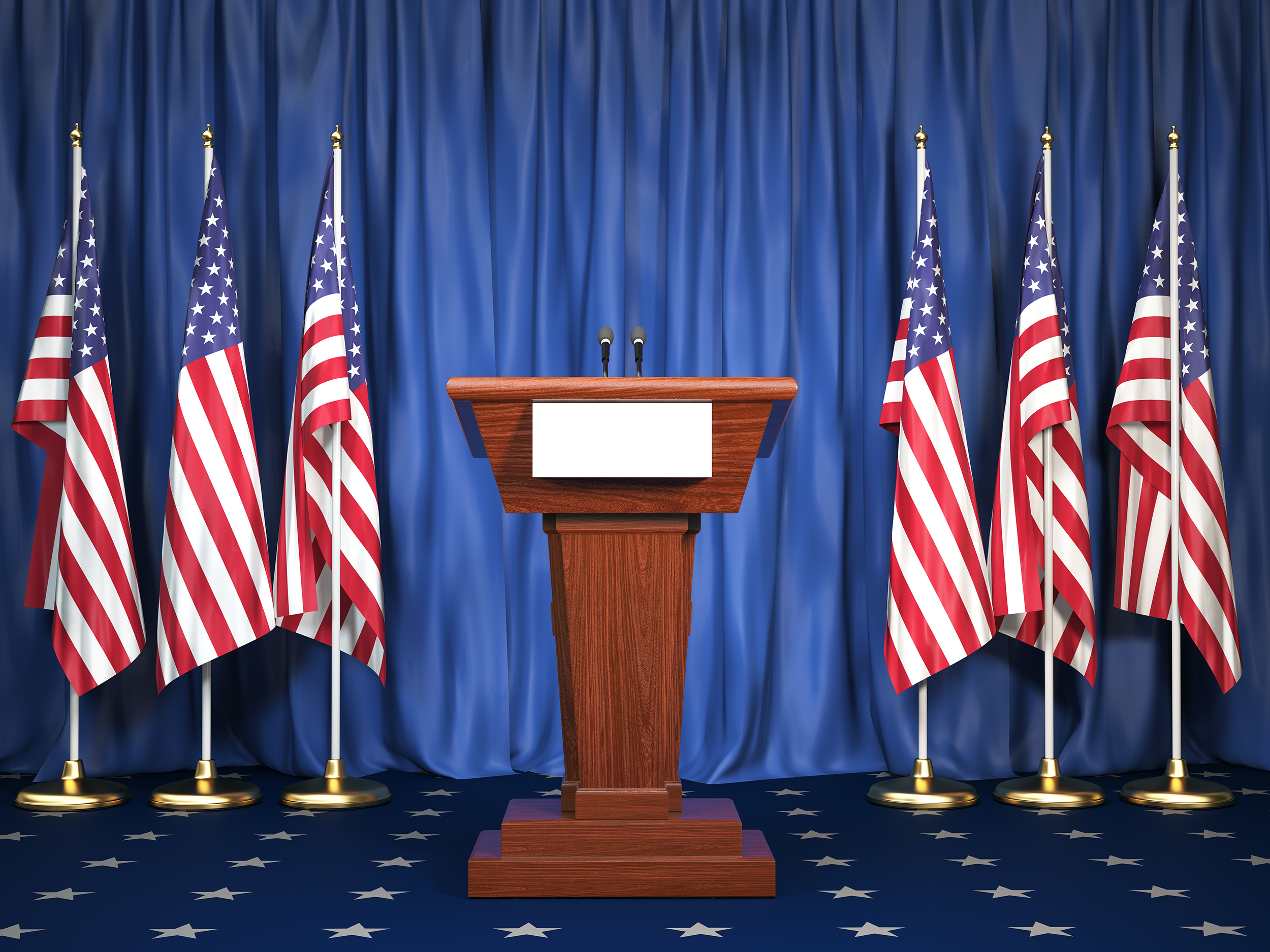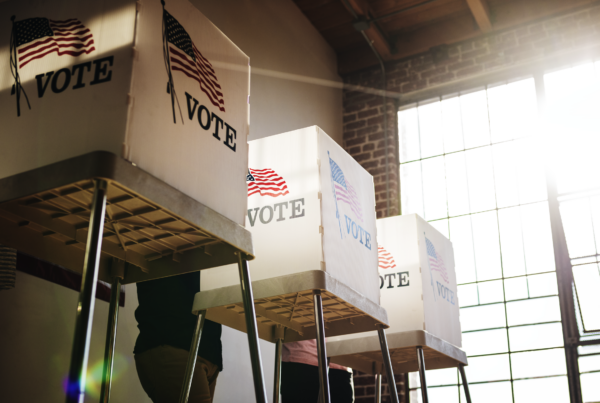Little Pro-Trump Advertising
(MIDDLETOWN, CT) July 16, 2024 – The Biden campaign maintained a relatively steady level of television ad spending in the two weeks following the debate (ending July 10), but pro-Biden group spending declined, according to an analysis by the Wesleyan Media Project. The Biden campaign (including coordinated spending with the DNC) spent an estimated $10.4 million on 22,348 ad airings in the two weeks prior to the debate and spent an estimated $8.9 million on 24,307 airings in the two weeks after, through July 10 (Table 1).
The number of media markets in which the campaign was active–which we define as those that have seen over 100 ads–has increased slightly, from 27 to 29. The top markets for the Biden campaign have remained roughly consistent, with Phoenix, Philadelphia, Atlanta, and Las Vegas seeing roughly 2,000 spots in the two weeks since the debate; these were the same top four markets for Biden in the two weeks prior to the debate.
Table 1: Presidential TV Airings in the Two Weeks Before and After the Debate
| Airings | Est Spend (in $Ms) | # Markets w/ over 100 ads | ||
|---|---|---|---|---|
| Biden + Coordinated DNC | Pre-Debate | 22,348 | 10.4 | 27 |
| Post-Debate | 24,307 | 8.9 | 29 | |
| All other pro-Dem | Pre-Debate | 8,689 | 11.0 | 19 |
| Post-Debate | 4,440 | 6.7 | 9 | |
| Trump | Pre-Debate | 0 | 0 | 0 |
| Post-Debate | 29 | 0.1 | 0 | |
| All other pro-Rep | Pre-Debate | 5,059 | 3.0 | 11 |
| Post-Debate | 4,950 | 2.0 | 11 | |
| Figures are from June 14 to June 27, 2024 (Pre-Debate) and June 28 to July 10, 2024 (Post-Debate). Television numbers include broadcast and national cable television. CITE SOURCE OF DATA AS: Vivvix CMAG with analysis by the Wesleyan Media Project. |
||||
Spending by pro-Biden groups, however, has dropped considerably on television from the pre-debate period. In the two weeks prior to the debate, pro-Biden groups spent $11 million on 8,689 ad airings in 19 media markets. Since that time, pro-Biden groups have spent $6.7 million on 4,440 ad airings.
One reason for the decline is that AB PAC stopped spending in the presidential race on June 23. But spending by Future Forward, the largest pro-Biden super PAC, has also declined since the debate. In the two weeks prior, Future Forward (in collaboration with Climate Power) spent $8 million on 5,772 ad airings. In the two weeks since the debate, Future Forward spent $6.5 million on 4,319 ad airings. The number of media markets in which the group spent money was exactly the same: eight.
“There are hints that ad spending supportive of Biden after his unsteady debate has declined, especially among the supportive groups,” said Travis Ridout, co-director of the Wesleyan Media Project. “But so far we’ve not seen the Biden campaign exit any media markets.”
The drop from some groups may not be a consequence of the debate, however, but instead a strategic decision to reserve spending for later in the campaign. We examined ad contracts for spending in the coming months (so-called “pre-booked” ad time), and Future Forward is still planning over $136 million in local broadcast and cable spending in the Fall, starting right after the Democratic convention in late August.
When it comes to Trump advertising, the campaign itself has spent almost nothing, either prior to or after the debate. The number of pro-Trump ads, including supportive groups, is almost the same in the two weeks prior to the debate as in the two weeks after, though spending has declined.
All told, pro-Biden forces have spent about $37 million in local broadcast ads in the month around the debate on June 27. The Trump campaign and his supporters have spent just $5 million.
Harris Not Mentioned in TV Ads
The idea that pro-Trump advertisers might step up attacks on Vice President Harris is not reflected in our data, which show that no advertiser in the presidential race mentioned Harris prior to the debate, and no advertiser mentioned Harris in the two weeks since.
One hundred percent of pro-Trump ads contained an attack on Biden, both before and after the debate. Moreover, after the debate Republican ads shifted to include more pro-Trump messages (nearly 62 percent after the debate, compared to less than 1 percent in the two weeks before the debate). For Democratic ads, the emphasis has also shifted a bit, with ads since the debate featuring more anti-Trump appeals and fewer pro-Biden mentions.
“The Biden campaign wants to remind voters about the likely consequences of a second Trump term, but after the debate the campaign also needs to assure voters that the president is still up for the job,” said Michael Franz, co-director of the Wesleyan Media Project. “It will be interesting to see how Biden addresses these needs in his ads in the coming weeks.”
Table 2: Trump, Biden, and Harris References in Presidential TV Ads Before and After the Debate
| Airings | Anti-Trump message | Pro-Biden message | Pro-Harris message |
||
|---|---|---|---|---|---|
| Pro-Dem sponsor | Pre-Debate | 31,037 | 18.7% | 21.4% | 0.0% |
| Post-Debate | 28,747 | 27.6% | 16.6% | 0.0% | |
| Airings | Pro-Trump | Anti-Biden | Anti-Harris | ||
| Pro-Rep sponsor | Pre-Debate | 5,059 | 0.2% | 100.0% | 0.0% |
| Post-Debate | 4,979 | 61.8% | 100.0% | 0.0% | |
| Figures are from June 14 to June 27, 2024 (Pre-Debate) and June 28 to July 10, 2024 (Post-Debate). Television numbers include broadcast and national cable television. CITE SOURCE OF DATA AS: Vivvix CMAG with analysis by the Wesleyan Media Project. |
|||||
Trump Largely Missing from Senate TV Ads, with Biden a Focus for Senate Republicans
The Wesleyan Media Project also looked for presidential candidate mentions in ads for congressional races. Table 3 looks at U.S. House ads in the two weeks around the debate, and Table 4 examines ads in U.S. Senate races. For House races, mentions of Trump or Biden in pro-Democratic ads have declined as a proportion of ad airings. (There is a brief increase in mentions of Vice President Harris, but she is featured in just two unique ads in this time frame, both in the same congressional race.) In Republican ads, Biden and Trump are featured in roughly equal proportions of ads in the weeks before and after the debate.
Table 3: Trump, Biden, and Harris References in TV Airings for U.S. House Races Before
and After the Presidential Debate
| Airings | Anti-Trump | Pro-Biden | Pro-Harris | ||
|---|---|---|---|---|---|
| Pro-Dem | Pre-Debate | 12,396 | 18.5% | 28.8% | 0.7% |
| Post-Debate | 6,823 | 11.9% | 19.6% | 3.4% | |
| Airings | Pro-Trump | Anti-Biden | Anti-Harris | ||
| Pro-Rep | Pre-Debate | 20,286 | 24.2% | 20.7% | 0.0% |
| Post-Debate | 7,838 | 26.7% | 23.0% | 0.0% | |
| Figures are from June 14 to June 27, 2024 (Pre-Debate) and June 28 to July 10, 2024 (Post-Debate). Television numbers include broadcast television. CITE SOURCE OF DATA AS: Vivvix CMAG with analysis by the Wesleyan Media Project. |
|||||
In U.S. Senate ads, Democrats and their allies have avoided mentions of Trump, Biden, or Harris, while pro-Republican ads have stepped up their attacks on Biden in the two weeks after the debate (with Biden featured in nearly two-thirds of Republican ads since June 27, up from 36 percent in the two weeks leading up to the debate). Trump is largely absent from pro-Republican ads in Senate races, though.
“Democratic candidates and allies in Senate races have skipped mentions of the presidential candidates in the last month,” said Erika Franklin Fowler, co-director of the Wesleyan Media Project. “Given their slim majority, Democrats seem less interested in wading into the presidential race and more focused on broader policy appeals. Republicans, meanwhile, see some value in piling on Biden.”
Table 4: Trump, Biden, and Harris References in TV Airings for U.S. Senate Races Before and After the Presidential Debate
| Airings | Anti-Trump | Pro-Biden | Pro-Harris | ||
|---|---|---|---|---|---|
| Pro-Dem | Pre-Debate | 25,234 | 0.0% | 0.0% | 0.0% |
| Post-Debate | 18,392 | 0.0% | 0.0% | 0.0% | |
| Airings | Pro-Trump | Anti-Biden | Anti-Harris | ||
| Pro-Rep | Pre-Debate | 19,936 | 3.5% | 36.2% | 0.0% |
| Post-Debate | 14,063 | 4.3% | 64.5% | 0.0% | |
| Figures are from June 14 to June 27, 2024 (Pre-Debate) and June 28 to July 10, 2024 (Post-Debate). Television numbers include broadcast television. CITE SOURCE OF DATA AS: Vivvix CMAG with analysis by the Wesleyan Media Project. |
|||||
About the Data
Television ad totals reported here are from Vivvix CMAG (unless otherwise specified) and refer to broadcast television. All cost estimates for television are precisely that: estimates.
About this Report
The Wesleyan Media Project provides real-time tracking and analysis of all political television advertising in an effort to increase transparency in elections. Housed in Wesleyan’s Quantitative Analysis Center – part of the Allbritton Center for the Study of Public Life – the Wesleyan Media Project is the successor to the Wisconsin Advertising Project, which disbanded in 2009. It is directed by Erika Franklin Fowler, professor of government at Wesleyan University, Michael M. Franz, professor of government at Bowdoin College and Travis N. Ridout, professor of political science at Washington State University. WMP personnel include Breeze Floyd (Program Manager), Pavel Oleinikov (Associate Director, QAC), Yujin Kim (Post-Doctoral Fellow) and Meiqing Zhang (Post-Doctoral Fellow).
The Wesleyan Media Project’s real-time tracking in 2024 is supported by Wesleyan University and the John S. and James L. Knight Foundation. The Wesleyan Media Project is partnering again this year with OpenSecrets, to provide added information on outside group disclosure and candidate status.
Periodic releases of data will be posted on the project’s website and dispersed via LinkedIn, Bluesky @wesmediaproject.bsky.social and Twitter @wesmediaproject. To be added to our email update list, click here.
For more information contact: media@wesleyan.edu.
About Wesleyan University
Wesleyan University, in Middletown, Conn., is known for the excellence of its academic and co-curricular programs. With more than 2,900 undergraduates and 200 graduate students, Wesleyan is dedicated to providing a liberal arts education characterized by boldness, rigor and practical idealism. For more, visit www.wesleyan.edu.
About the John S. and James L. Knight Foundation
We are social investors who support democracy by funding free expression and journalism, arts and culture in community, research in areas of media and democracy, and in the success of American cities and towns where the Knight brothers once had newspapers. Learn more at kf.org and follow @knightfdn on social media.




